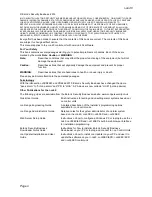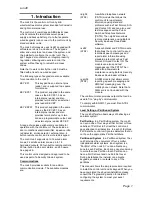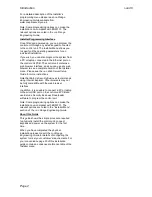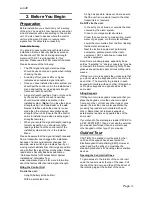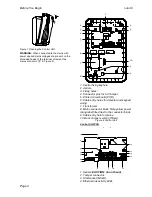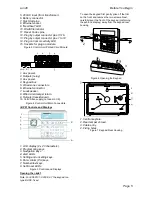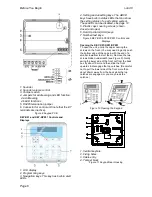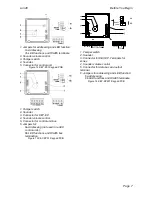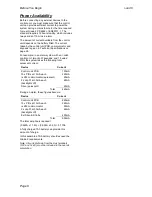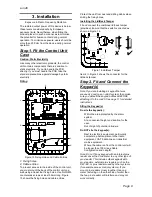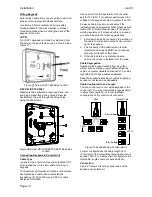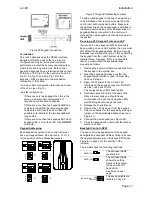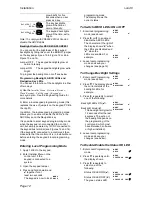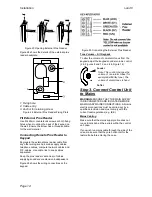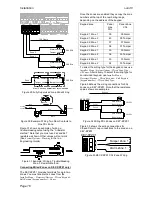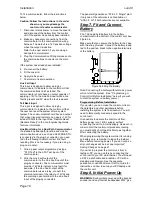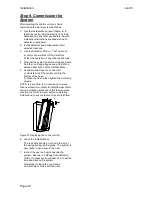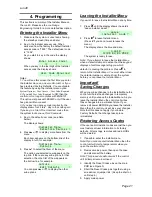
Before You Begin
i-on40
Page 8
Power Availability
Before connecting any external devices to the
control unit, you must make sure that the control
unit can provide sufficient current to power the
system during a mains failure for the time required
to meet Grade 2 PD6662 or EN50131-1. The
standard requires 12 hour standby, which includes
two periods of 15 mins in alarm.
The amount of current available from the control
unit depends on the battery fitted. The current
taken by the control unit PCB, communicator and
keypads is given in Technical Specifications on
page 26.
For example: in an alarm system with an i-on40
control unit, two i-kp01 keypads, and 15 wired
PIRs the system takes the following total
quiescent current:
Device
Current
Control unit PCB
130mA
15 x PIRs at 15mA each
225mA
i-sd02 communicator (quiescent)
20mA
2 x i-kp01 at 30mA each
(backlights off)
60mA
Siren (quiescent)
25mA
Total
460mA
During an alarm, these figures become:
Device
Current
Control unit PCB
220mA
15 x PIRs at 15mA each
225mA
i-sd02 communicator
50mA
2 x i-kp01 at 30mA each
(backlights off)
60mA
Ext Siren & Strobe
400mA
Total
955mA
The total amp hours required =
(0.460A x 11.5h) + (0.955A x 0.5h) = 5.77Ah
A fully charged 7Ah battery can provide this
amount of charge.
In this example a 7Ah battery should exceed the
Grade 2 requirements.
Note: All current drawn from the Aux terminals
(12V and 14.4V) must be included in the overall
calculation.


